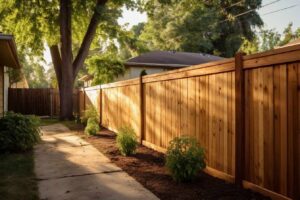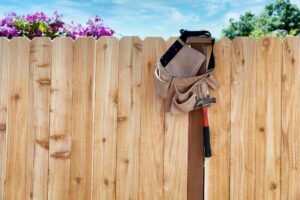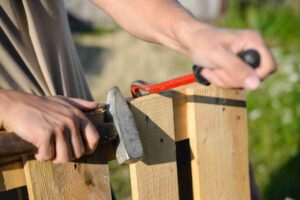What Type of Wood Fence Lasts the Longest?
When you’re planning to add a wooden fence to your property, one of the first decisions you have to make is based on what type of wood fence lasts the longest. Other than choosing wood as your primary material for your fences there are other materials for your fence too in case you haven’t fully decided yet.
If you’re decided to go with wooden fences, you may even consider privacy as your top priority. The initial and crucial step first revolves around your wood selection. If you’re new to wood fences, this choice may be overwhelming due to the many wood options available, each with its advantages and drawbacks. So, what’s the ideal type of wood for your fence? For the right decision, it’s essential to acquaint yourself with the distinctive features of each wood type. By doing so, you can tailor your choice to your preferences and budget, crafting a fence that suits you best.
What Type of Wood Fence Material Lasts the Longest?
When you’re considering the longest-lasting wood fences, your top choices typically include redwood, cedar, or pressure-treated pine. Cedar can provide you with a lasting fence that lasts 15 to 30 years and even up to 40 years if you opt for treated cedar. Treated pine is another robust option, offering an impressive lifespan of about 20 years regardless of the fence style. Meanwhile, Redwood can be strong for approximately 25 years
It’s important to note that regardless of your chosen fence material, the fence posts are likely to experience wear and tear before the fence panels that don’t touch the ground. To enhance the longevity and appearance of any wood fence, consider applying a stain to keep it looking great for an extended period.
Redwood
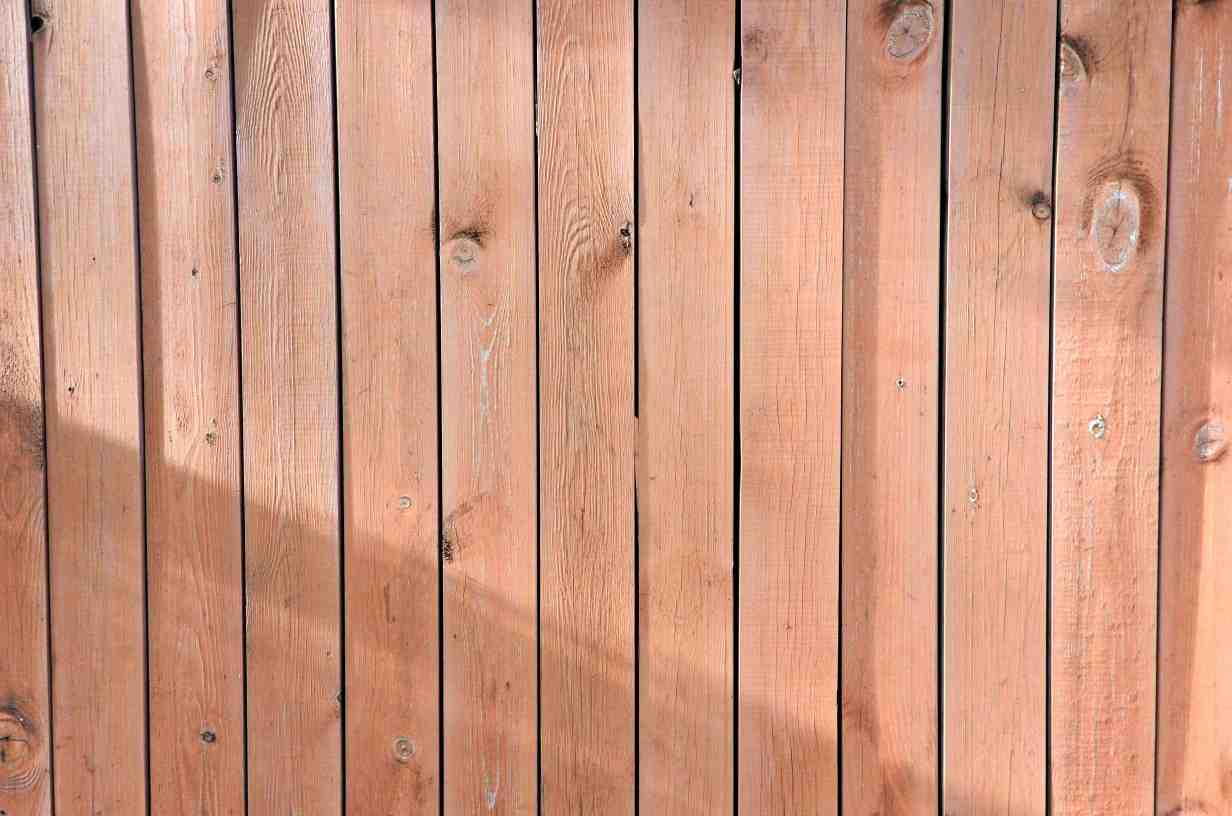
Consider Redwood for your fence – it’s a top choice. Despite having a higher price, its inherent beauty, exceptional durability, and ability to resist rot and insects justify the investment. It can even outlast cedar, lasting 20 to 25 years with minimal maintenance. Staining enhances its appearance. Redwood typically costs around $48 per linear foot, including installation, for long-lasting elegance.”
Oak
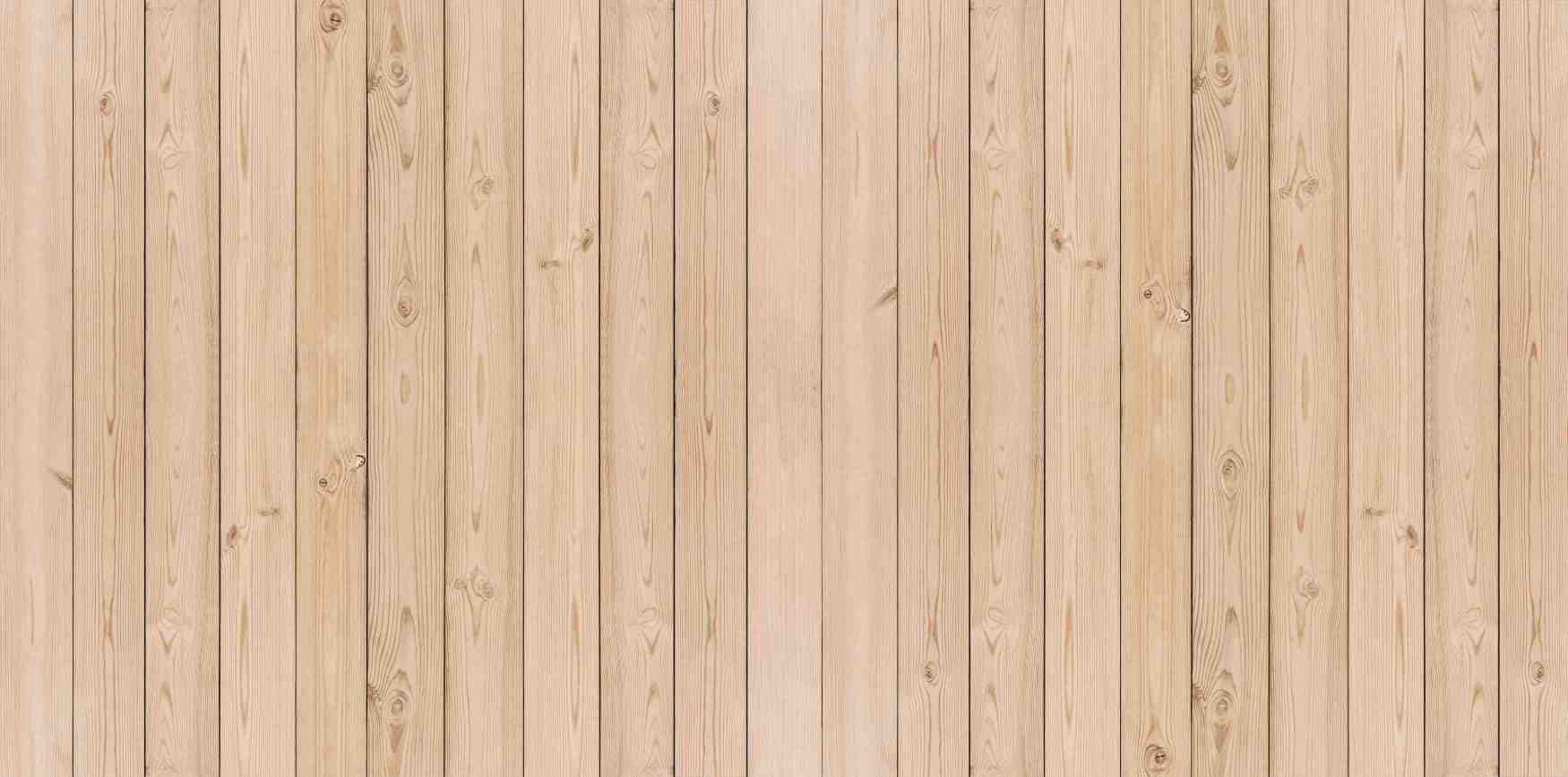
Oak is a durable choice that can outlast pressure-treated pine. Untreated oak fences can endure for up to 20 years. It offers a variety of natural colors and a beautiful grain pattern. Keep in mind it’s not naturally insect-resistant, so it’s best for drier regions. Treating it makes it suitable for wetter areas. However, it’s on the higher end cost-wise, around $35 per linear foot, including installation.
Cedar

Cedar is an excellent choice if you want a wood that resists rot and insects, ideal for moister areas. Its natural oils make it durable, especially against termites, and it’s budget-friendly without compromising quality. With proper care, cedar fences can last up to 30 years. Cedar comes in two types: red and white cedar. If you’re painting, red cedar’s red hue can be challenging to cover, making white cedar a popular option. Cedar naturally develops a gray patina over time, adding character, and you’ll notice its pleasant aroma. Cedar falls in the mid-range cost-wise, averaging about $33 per linear foot, including installation, offering both value and longevity.
Douglas Fir
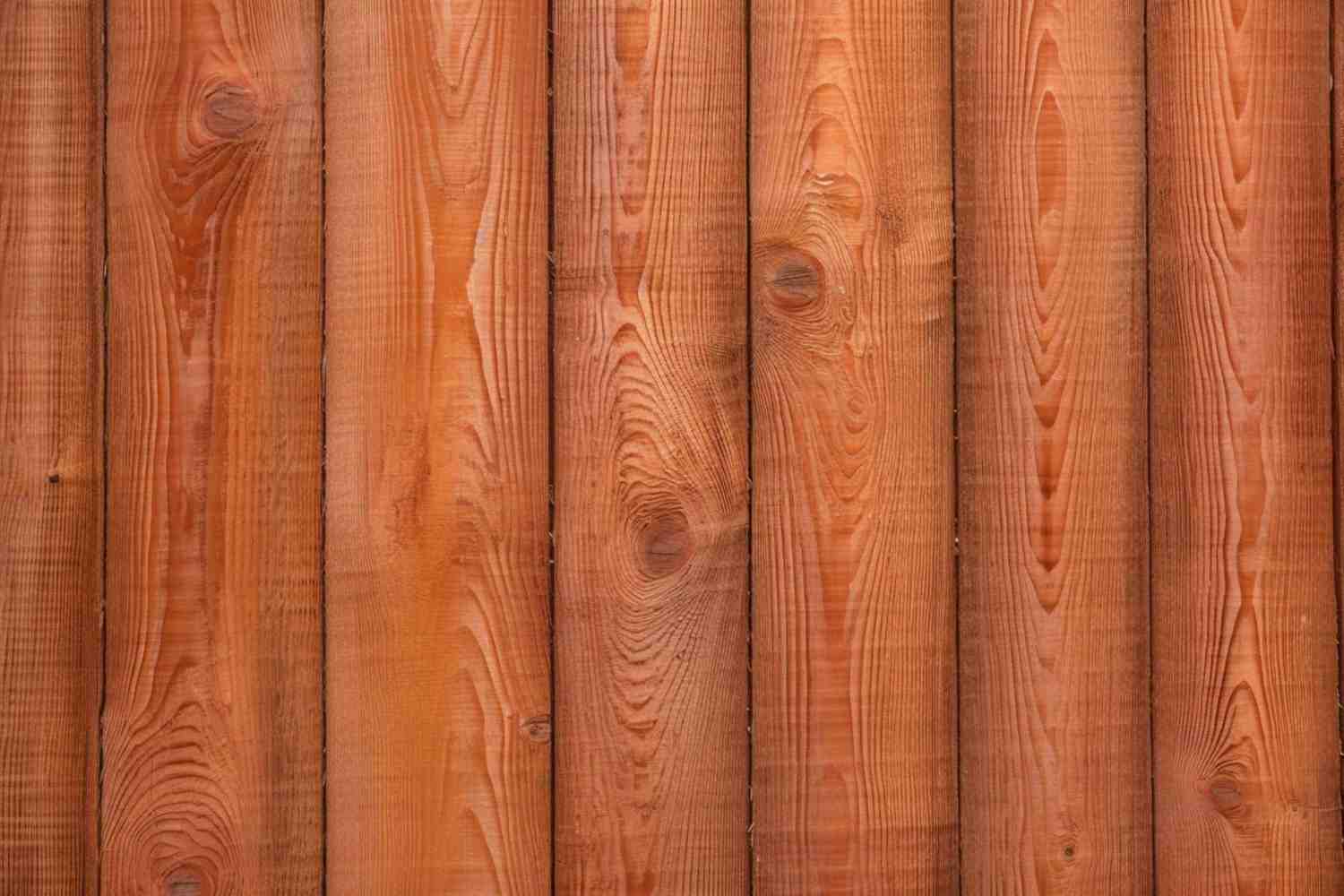
For strength and a quality look, Douglas Fir is your top choice. It’s exceptionally durable with a straight grain, and its light brown color develops into a stylish gray over time. You can preserve its original coloring with sealing, painting, or staining. While it’s a bit more expensive than pressure-treated wood, it’s a budget-friendly option compared to Redwood. On average, a Douglas Fir wood fence costs around $32 per linear foot, including installation, offering an outstanding balance of affordability and quality.
Pressure-Treated Pine: What is the Cheapest Type of Wood Fence?
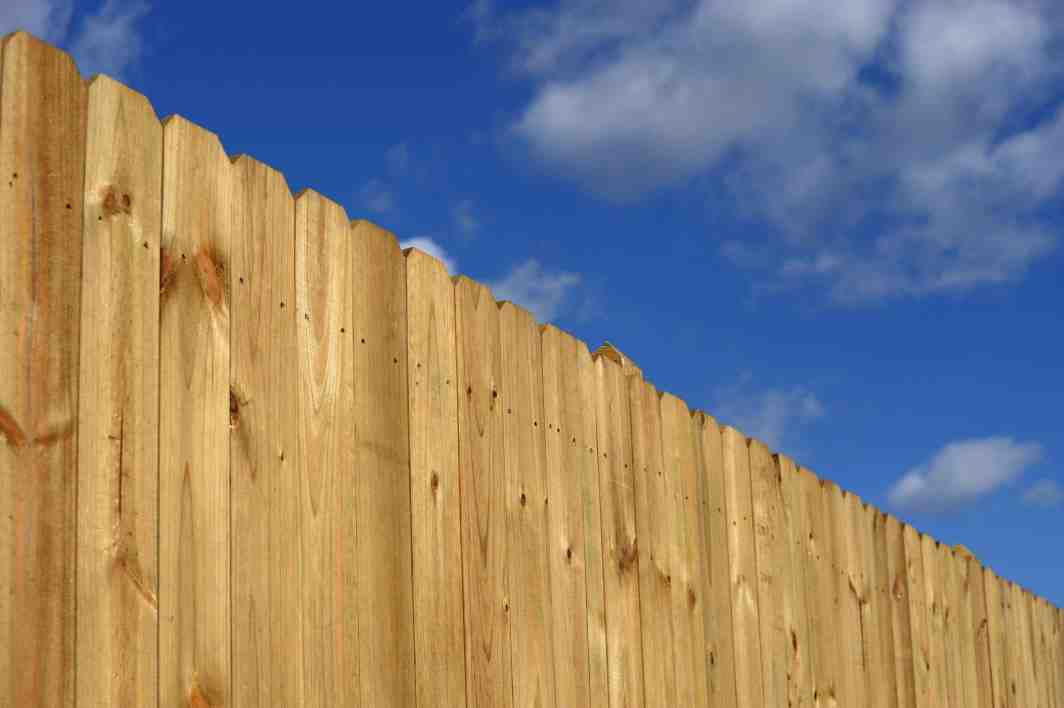
For durability, protection from rot and insects, and cost-effectiveness, think about pressure-treated pine. It’s pre-treated to enhance its resilience, making it a budget-friendly option for your fencing needs. While it may not match the premium woods like Redwood or cedar in stability, it’s an economical choice. You can even have it color-treated to mimic the appearance of Redwood or cedar. Painting or staining your fence is a simple process. A pressure-treated pine fence typically costs between $10 and $25 per linear foot, including installation, making it a wallet-friendly choice.
What is the Best Wood Fence Style for Longevity?
When you’re contemplating your fencing options, you’ll often prioritize function and aesthetics. However, for those who want to ensure their fence lasts as long as possible, the question then becomes, ‘What is the Best Fence Style for Longevity?’ In this case, understanding what affects a fence’s lifespan becomes crucial.
However, there’s no single, straightforward answer to this question, as several factors matter when determining a fence’s durability. Purpose suitability becomes a significant component, especially when the fence is intended to contain robust animals or deter. Intruders. Additionally, the local climate and insect-related issues both play crucial roles.
Fences serve a multitude of practical purposes in your life, such as providing you with privacy, ensuring the safety of your children and pets, reducing wind and noise, and safeguarding swimming pools from unsupervised access. At the same time, the perfect wood fence style can also enhance the visual charm of your home, boosting its curb appeal. Here are some wood fence styles:
Wood Picket Fence
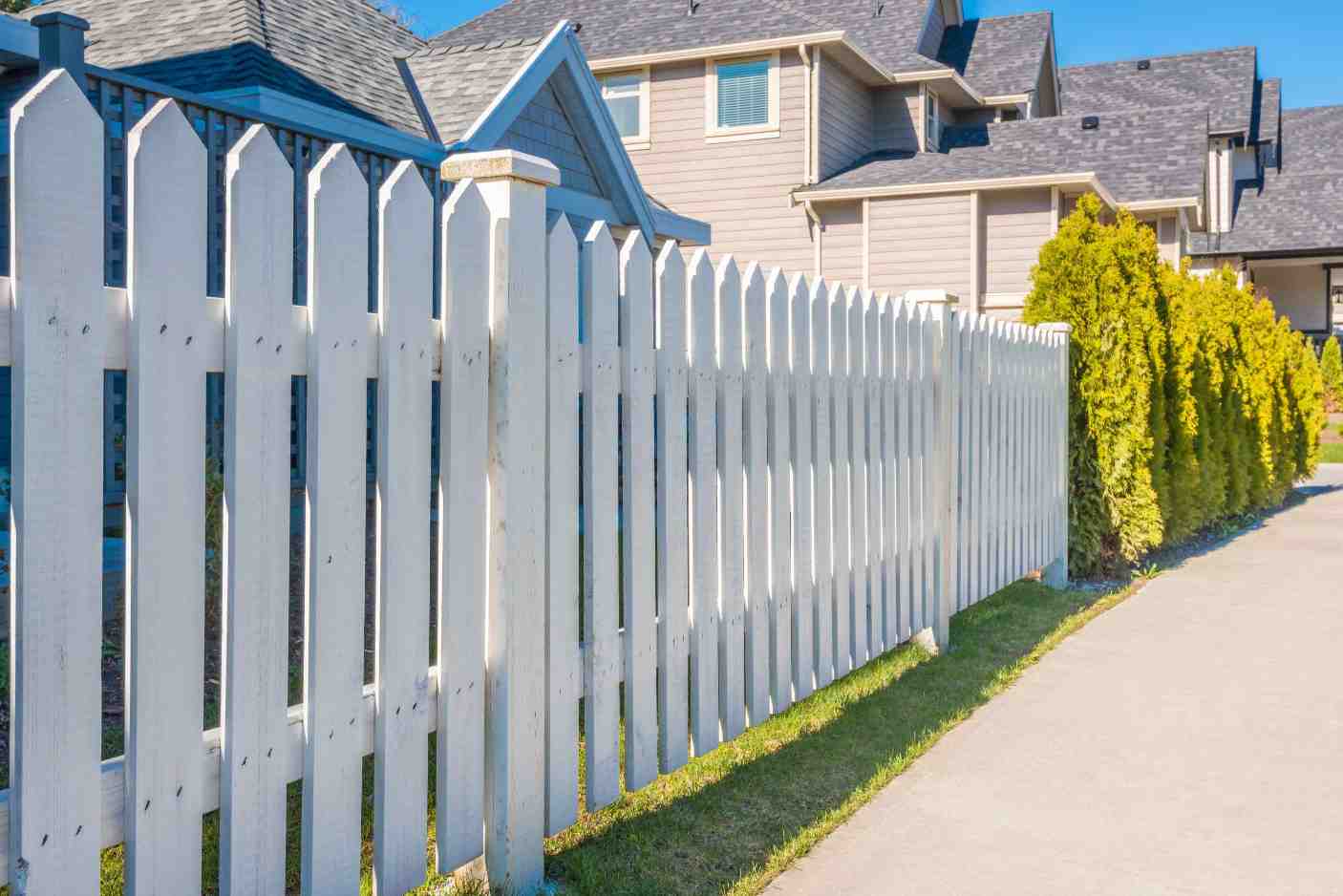
You have the flexibility to personalize the gap size between pickets, but it’s essential to strike a balance, ensuring it’s not too wide, which might allow kids or pets to escape or become trapped. While white paint is the traditional choice, a natural wood picket fence can introduce a more modern aesthetic. Picket fences typically have a lower height, which often translates to lower material costs compared to other fence styles.
Pros:
- Ideal for gardens, allowing sunlight to filter through.
- Cost-effective compared to many other fence types.
- Customizable height, picket shape, gap size, and more.
- Provides a view of the outside.
Cons:
- Offers limited privacy.
- Not suitable for high fences.
- May not deter intruders effectively.
Lattice Fence
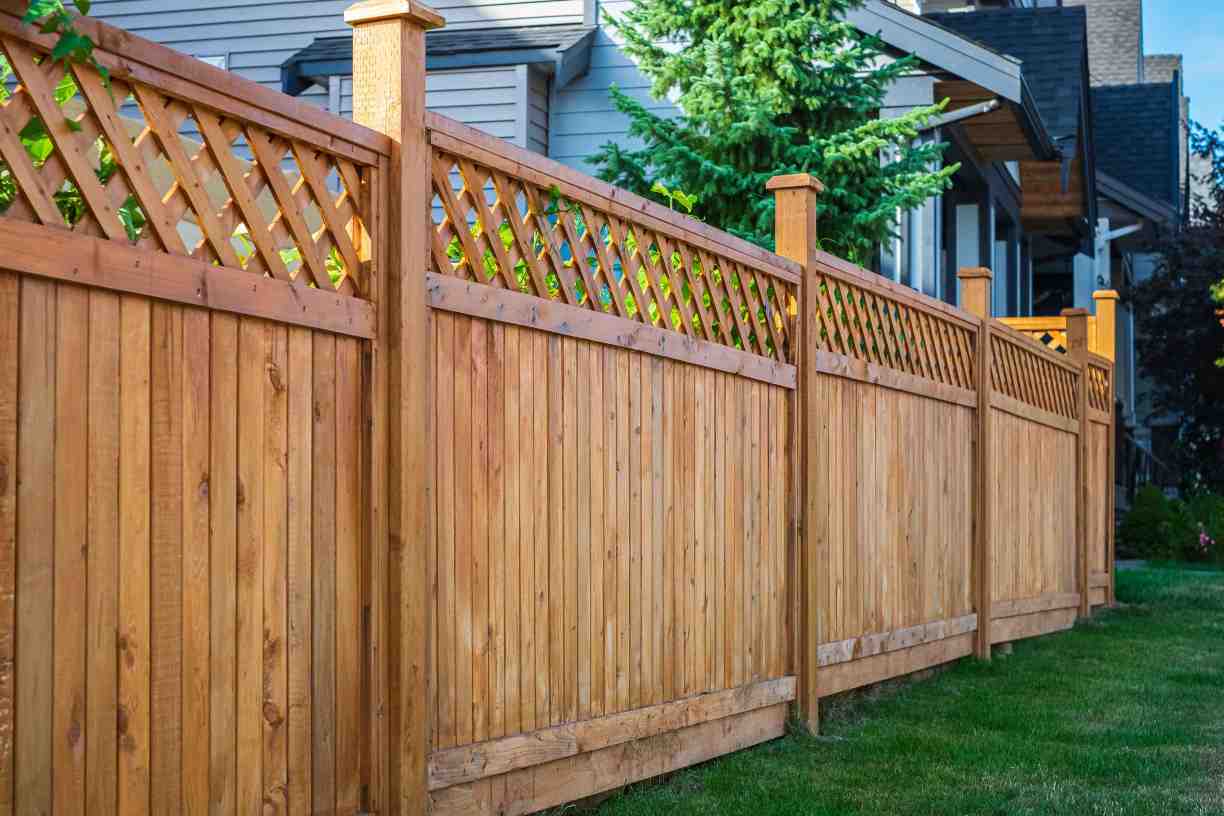
Imagine the elegance of a garden trellis, and you’ll get the essence of lattice fencing. With its crisscrossed wooden strips, it creates an alluring, decorative design that can enhance your outdoor space.
You can use wood lattice material to create full-size fences or as a decorative accent atop another style. Lattice fencing is particularly well-suited for gardens because it effectively keeps out deer and rabbits while welcoming natural light and promoting airflow. What’s more, it’s a cost-effective choice compared to various other wood fencing options. With pre-made panels, the installation process is straightforward and hassle-free.
Pros:
- Invites sunlight and allows for proper airflow.
- Strikes a good balance between security and visibility.
- Features an attractive, decorative design.
- Ideal for supporting climbing plants.
- Offers more budget-friendly materials and installation costs than many other wood fences.
Cons:
- Somewhat less durable than certain other wood fence styles.
- Provides limited privacy.
Post and Rail
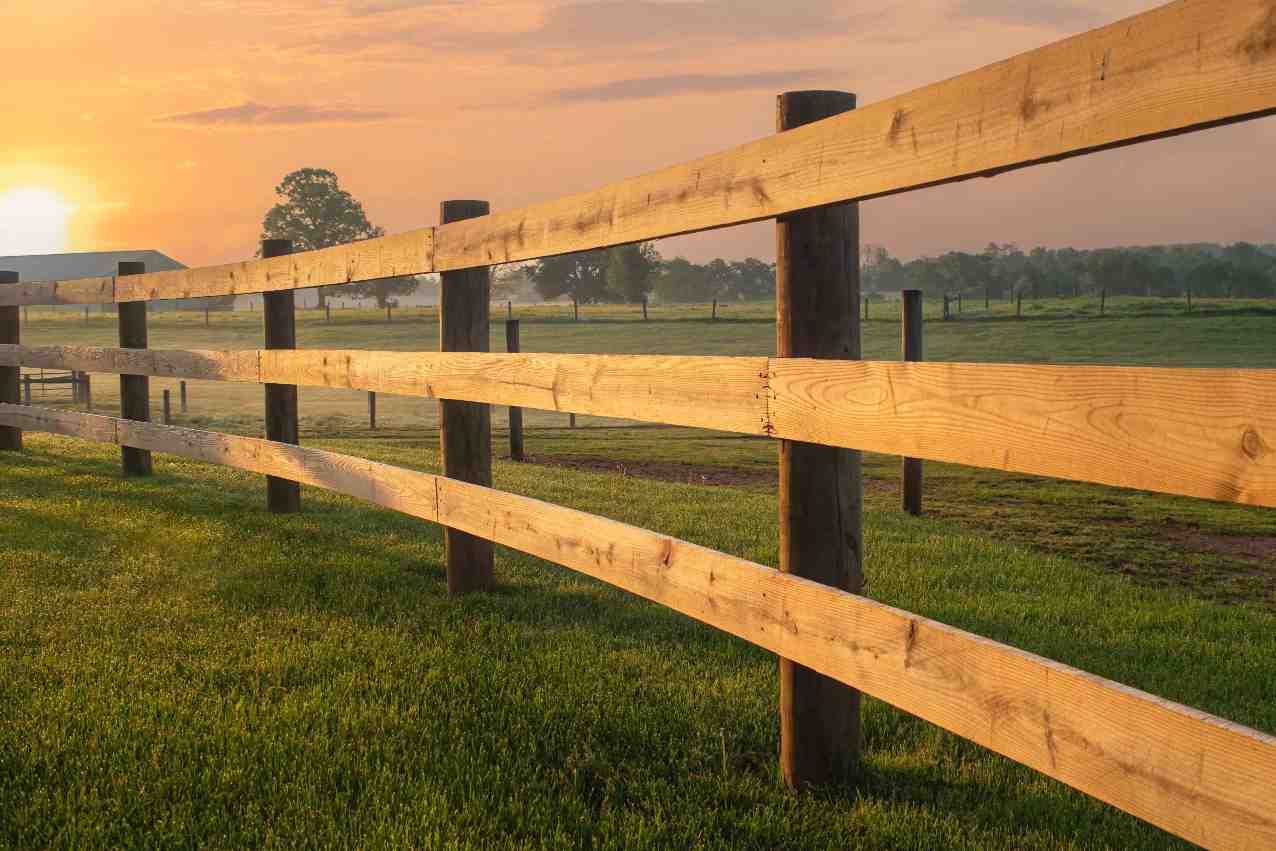
When you’re considering post-and-rail fences, envision long, smoothly cut rectangular timber rails that stretch between substantial posts. These fences offer a more refined appearance compared to the rugged and rustic look of split-rail fencing.
Post-and-rail style is a suitable choice for farms and extensive properties, whether you need to confine livestock or establish clear property boundaries. As it requires less fencing material than densely packed picket fences, post-and-rail fencing proves to be a relatively straightforward option for both installation and repairs.
Pros:
- Easy to maintain and repair as needed.
- Allows unobstructed views of your surroundings.
- Ideal for effectively securing livestock.
Cons:
- Offers limited protection against strong winds.
- Less effective at deterring intruders.
Louvered
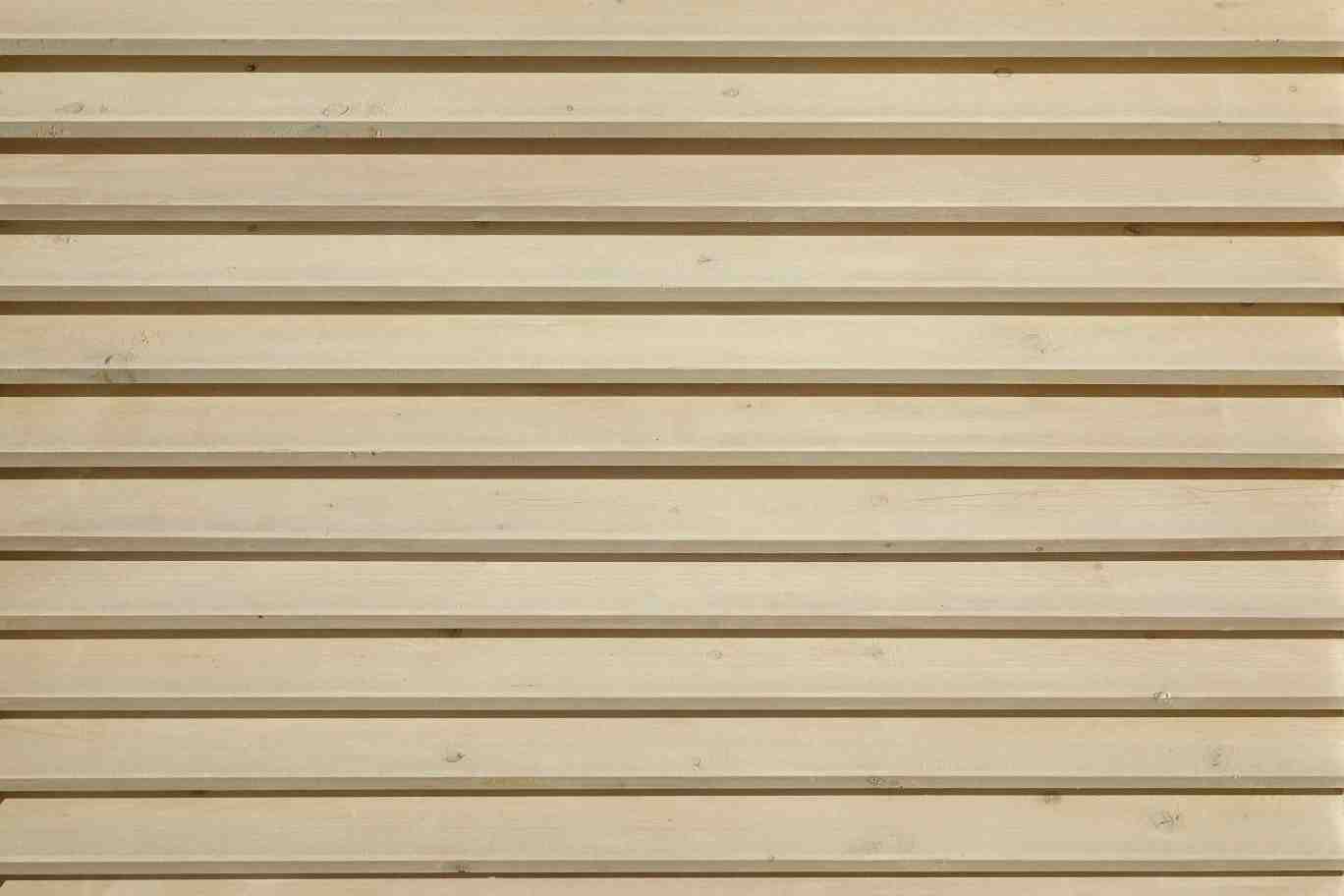
When considering a louvered wood fence, you’ll notice that the pickets are set at an angle in the same direction. This design grants complete privacy when viewed from one side while offering visibility and allowing airflow from the other perspective.
You have the flexibility to orient these louvers either horizontally or vertically, making them an excellent choice for elevating the style and modern aesthetic of your pool, deck, or patio area.
Pros:
- Enhances airflow in your outdoor space.
- Provides both privacy and visibility.
- Welcomes sunlight for nurturing your plants and gardens.
Cons:
- Installation can be challenging for those looking to take on a DIY project.
Vertical Board Fence
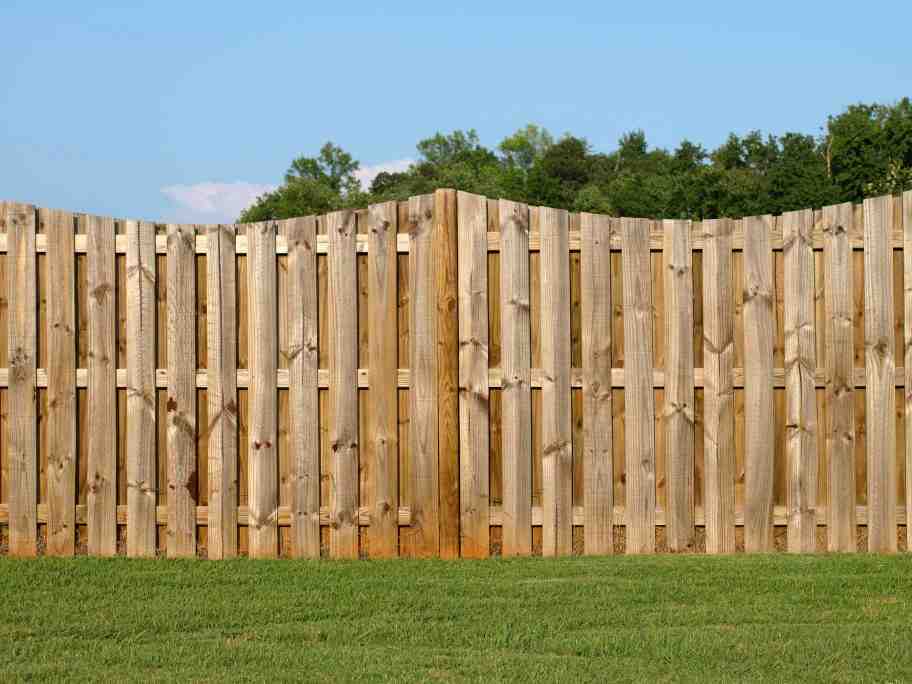
When you see a vertical board fence, you’ll find it employs alternating pickets on both sides with a gap in between, creating a unique ‘shadow’ effect. These gaps give the impression of solidity when viewed head-on, but from an angle, you gain visibility through to the other side. By overlapping or aligning the tall vertical boards edge to edge, you achieve both privacy and wind-blocking benefits. While wind blockage can be beneficial in winter, it might not be as appealing in the summertime.
Pros:
- Offers a visually intriguing design.
- Conceals the less attractive side from your neighbors’ view.
- Alternating pickets distribute weight evenly, ensuring high durability.
Cons:
- The gaps may allow neighbors or pedestrians to see inside, depending on your preferences.
- Correct installation can be challenging for DIY enthusiasts.
How Can I Make My Fence Last Longer?
Taking care of your wood fence is essential to ensure it stands the test of time. Here’s how you can maintain it effectively:
Annual Inspection and Repair
Make it a routine to inspect and repair your wooden fence at least annually but more frequently if you want to stay on top of maintenance. Look for signs of rot on pickets and posts and replace affected pieces promptly. Also, check the security of your fence’s hardware during inspections and address any protruding or damaged nails by either hammering them back in or replacing them as needed.
Wood Fence Cleaning Every 3–5 Years
Make it a routine to refresh your wood fence every 3 to 5 years by stripping it down and resealing it. During this process, give your fence a thorough cleaning, remove unwanted vines, and eliminate deposits by washing, sanding, or scraping. Your choice of sealant will depend on the look and level of protection you desire.
Once you’ve cleaned the fence, consider whether you want to apply a new stain or a fresh paint color. In most cases, people opt for consistency by using the same finish as before. Stains can be used as they are or enhanced with a clear coat for added protection. The color should serve as both a finish and a seal, although some pre-blended paints include both the primer and finish.
Layering for Protection
If you’ve painted your fence, it’s important to apply multiple layers to prevent chipping and flaking. When resealing, focus on maintaining all layers, not just the top one. Latex-based paints are ideal due to their weather resistance and adhesion to wood. Regular resealing ensures you maintain the fence’s appearance and durability.
Consider using a clear polyurethane sealant to protect simple paints from UV exposure.
Upgrade With Metal Posts
Choosing metal posts for your wooden fence significantly extends its lifespan compared to using wooden posts. Even treated lumber may not outlast metal posts. Regularly check for water damage that could lead to rot every few years, as rot can cause the fence to lean and may require expensive post replacement.
Certain metals like stainless steel or aluminum are less prone to rust, and you can finish them with paint or a metal finish for long-lasting durability.
Fighting Rot
Installing a rot board at the fence’s bottom edge with hardwood fasteners is crucial. This board absorbs moisture from rain, dew, or humidity, preventing the lower half of the fence from rotting too quickly. When the rot boards deteriorate, replace them to maintain the fence’s integrity.
Taking care of your wood fence is the key to ensuring it lasts. Regular inspections and prompt repairs, annual cleaning and resealing, layering for added protection, considering metal posts for longevity, and installing a rot board for moisture prevention are all essential practices to maintain the strength and appearance of your wooden fence. By staying proactive with these maintenance steps, you’ll extend the life of your fence and let it stand the test of time, adding value and charm to your property. Learn more on how to make your wood fence last longer.
